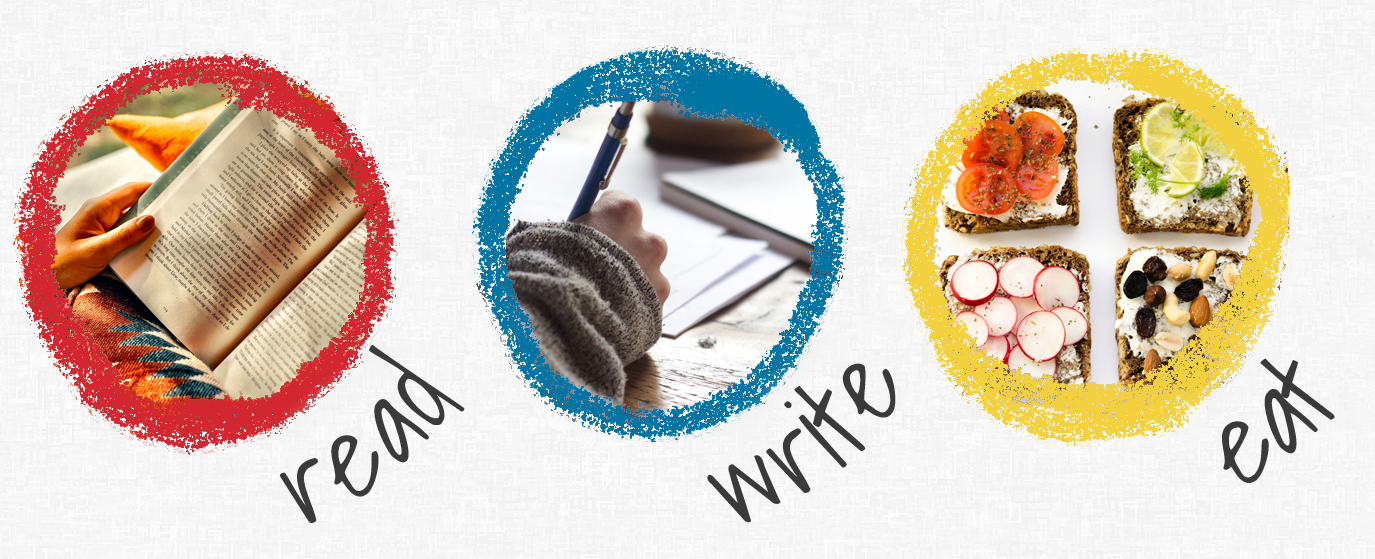Days are long. Afternoon light is at the perfect slant, casting the neighbors yards in lovely, clear yellow light. Soon we’ll have stone fruit, watermelon, chilled pink wine, and grilled…everything. Here’s what I’ve been up to in this shoulder season between spring and summer.

read
Life is not too short to reread books. I’ve again picked up Louise Erdrich’s LaRose, and I’m so moved, amazed, enthralled with this beautiful, generous and heartbreaking story. At the center of this novel lies the question: can a person do the worst thing possible and still be loved? The novel begins with a terrible accident. Erdrich tells the story in such calm and lucid language, I’m mesmerized. The first time around, I listened to the book. This time I’m reading, and I mean it, every chance I get I pick it up to read a few more pages, then I lose track of time. It’s one of those delicious paradox books–you want to devour it and you want it to never end.
I’m also listening to the audiobook of Maybe You Should Talk to Someone, by Lori Gottlieb. It’s a different kind of delicious. Written by a therapist, the book examines her work with her patients, her own experience in therapy, and explores behavior patterns, personality disorders, and just plain old human troubles. I feel a bit like a voyeur. It’s salacious at times and charming throughout. I’m learning about my own behavior. Plus I get the added joy of analyzing everyone I know! If you liked In Treatment, an HBO show from 2008-2010 with Gabriel Byrne, which I loved, I think you’ll like the book

write
Do you fall off on your writing game when the weather changes? What are you going to do to stay committed this summer? Here’s some ideas:
- Take your work outside. Whether that means you switch to writing long hand and take a legal pad to the beach, or if you simply cannot deal, take your laptop to the park. Writing outside in beautiful weather may diminish feeling deprived when you’re ‘stuck’ indoors at your desk.
- Get up earlier! I mean it. Just 30 minutes can make a difference.
- Set goals, but be flexible. Rather than time in the chair, maybe switch to word count. You may work smarter, quicker, in order to go for your swim/hike/bike ride. (And, really, really unplug. Put your phone in airplane mode. Install Freedom and use it. I’m chastising myself here…)
- Have an accountability partner! Someone you check in with daily/weekly, whatever you need, to give a progress report.
- When you’ve reached your goal, reward yourself. Run after the ice cream truck! Snooze in a hammock.
- Get it down. Get outside. Worry about editing later.
Another possibility to keep you going, sign up for a class or workshop, or start your own workshop. Having peers and deadlines is a boon and boost to most writers.
If you’re looking for a class, I’ve got an online class up at Hedgebrook. I had so much fun teaching Becoming Unstuck, Finding Flow and Freeing Your Voice. You can check out a snippet here. If you wonder why my voice sounds so mellow and chill it’s because…Hedgebrook! They take such good care of you, all tension and even your bones sort of melt away. Here’s another snippet in case you’re interested. And, register here!

eat
In the past two weeks I’ve made this salad four times. Unbelievably delicious. It’s a take on a salad from the now defunct Tasty and Sons restaurant here in Portland. Make it. You’re welcome!
- Tear 1 head of radicchio into 2″ pieces and soak in ice water while you prepare the salad.
- Turn oven to 400 degrees. Tear the best quality whole grain bread you can get your hands on into roughly cork sized pieces until you have a very generous cup full. Toss with a couple tablespoons extra virgin olive oil, sprinkle with sea salt and roast about 10 -12 minutes. Keep checking so you don’t burn the croutons. Set aside.
- Coarsely chop pitted, herbed green olives to make about ½ cup.
- Coarsely chop about 5-6 French breakfast radishes, or regular radishes if you cannot find French breakfast. (They’re thumb shaped, a bit milder than regular radishes, and white on top.)
- Wash one lemon, then zest. Place zest in a bowl with 2 tablespoons of lemon juice.
- Mince 2-3 cloves garlic. Sprinkle with sea salt and use flat surface of a chef’s knife to scrape back and forth to make a paste. Add to bowl with lemon.
- Add coarsely ground black pepper.
- Slowly whisk in ½ cup extra virgin olive oil.
- Drain and spin the radicchio. Transfer to large bowl. Add olives, croutons, radishes and a sprinkling of roasted, salted pumpkin seeds to taste. Toss well with the dressing. Enjoy!!

